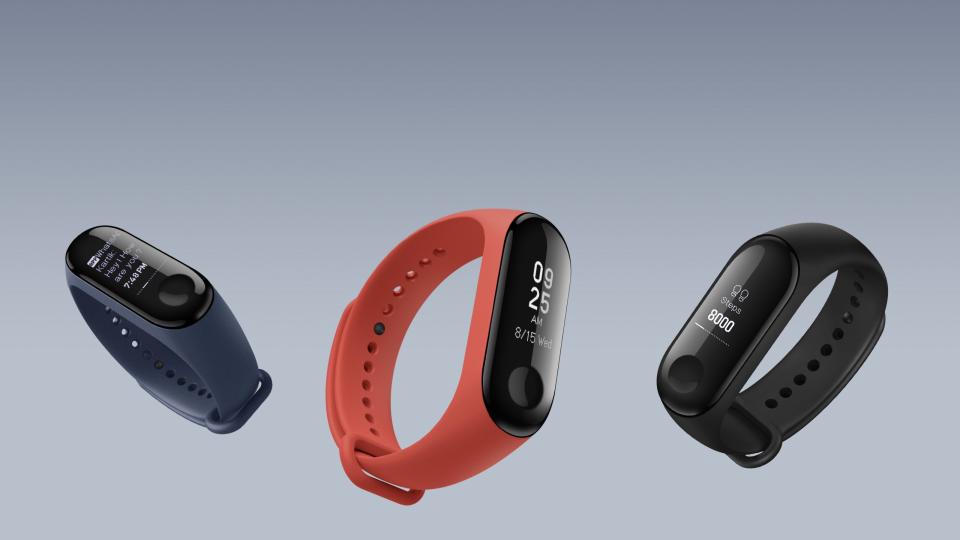The "Fitbit of China" Is Still Putting Fitbit to Shame
Fitbit's (NYSE: FIT) stock plunged about 70% over the past three years as its growth decelerated and competitors saturated the market. The wearables maker expects its revenue to rise just 1%-4% this year as its bottom line stays in the red.
Fitbit's dismal performance likely convinced many investors to avoid other wearable makers and stick with better-diversified players like Apple (NASDAQ: AAPL) or Garmin that sell wearables as a side business.
However, one wearables maker is still generating growth that puts Fitbit to shame: Huami (NYSE: HMI), the Chinese wearables maker that went public last February.

Image source: Amazfit.
Meet the "Fitbit of China"
Huami produces Xiaomi's (NASDAQOTH: XIACF) popular Mi Band fitness trackers, as well as its own Amazfit wearables and smartwatches. Xiaomi owns almost a fifth of Huami, and Xiaomi CEO Lei Jun owns another fifth of the company.
Xiaomi controlled 13.3% of the world's wearables market in the first quarter according to IDC, putting it in second place after Apple's 25.8% share. Fitbit, the former market leader, ranked fifth with a 5.9% share. Xiaomi's share expanded year-over-year, while Apple and Fitbit's shares declined.
Xiaomi's Mi Band devices are popular because they're much cheaper than Fitbit's comparable products. The Mi Band 3, which costs less than $30, lasts for 20 days on a single charge and sports a full-color OLED touchscreen with heart rate and activity trackers. Huami's own Amazfit smartwatches, which mainly cost $100 to $200, offer features similar to those of Fitbit's pricier Ionic and Versa watches.
How fast is Huami growing?
Huami consistently generated double-digit sales growth after its IPO in February 2018, and it's profitable by both GAAP and non-GAAP metrics. Here's how it fared over the past year.
YOY growth | Q1 2018 | Q2 2018 | Q3 2018 | Q4 2018 | Q1 2019 |
|---|---|---|---|---|---|
Revenue | 77% | 55% | 127% | 63% | 37% |
Adj. net income | 818% | 58% | 93% | 69% | 3% |
YOY = Year-over-year growth. RMB terms. Source: Huami quarterly reports.
Huami's growth decelerated significantly in the first quarter, but it also faced tough year-over-year comparisons. Huami's total shipments rose 17% annually to 5.6 million, as its gross margin expanded 220 basis points to 27.2% thanks to economies of scale, supply chain improvements, and robust sales of higher-margin Amazfit devices.

Image source: Xiaomi.
For comparison, Fitbit's device shipments rose 36% annually to 2.9 million last quarter, but it faced an easy comparison to a 27% drop a year earlier. Fitbit's adjusted gross margin plunged from 47.1% to 34.2% due to its growing dependence on lower-margin smartwatches and two one-time charges from warranties and an insurance claim.
How Xiaomi supports Huami
Xiaomi shoulders all the costs of designing, manufacturing, marketing, and distributing Huami's Xiaomi-branded devices. Huami only books operating expenses for the development and marketing of its own Amazfit devices.
This partnership is controversial since Huami would be unprofitable without Xiaomi's support. But it helped Huami keep a tight rein on its operating expenses, which rose just 1.5% annually last quarter. Its operating margin rose from 1.5% to 9.7%. Fitbit posted an operating loss last quarter, even after it reduced its operating expenses by 13%.
The bears argue that Huami's dependence on Xiaomi is risky. However, Xiaomi and its CEO control about 40% of the company -- so I doubt the partnership will end anytime soon. Furthermore, Huami is gradually reducing its dependence on Xiaomi by selling more Amazfit devices.
I'd consider buying Huami, but I'd still avoid Fitbit
Huami and Fitbit are both trading below their IPO prices, but Huami clearly has a brighter future.
Wall Street expects Huami's revenue and earnings to rise 34% and 15%, respectively, this year and the stock trades at just six times that earnings estimate. Fitbit is expected to squeeze out low single-digit sales growth this year as its bottom line stays in the red.
I'm not eager to buy Huami since the U.S.-China trade war is casting a pall over most Chinese stocks. But if trade tensions wane, I'd consider buying this stock before the market realizes that it's significantly undervalued relative to its growth potential.
More From The Motley Fool
Leo Sun owns shares of Apple. The Motley Fool owns shares of and recommends Apple and Fitbit. The Motley Fool has the following options: long January 2020 $150 calls on Apple and short January 2020 $155 calls on Apple. The Motley Fool has a disclosure policy.

 Yahoo Finance
Yahoo Finance 